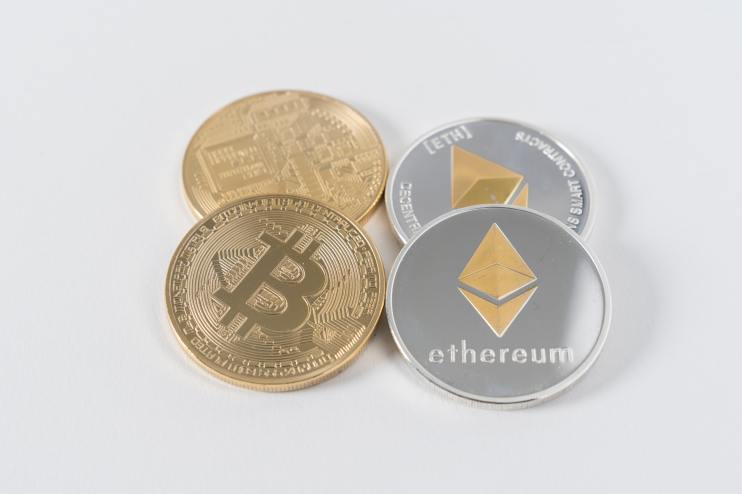The week in crypto: Institutions increase Bitcoin exposure, and Ethereum hits new milestone

Data from CryptoCompare shows that the price of Bitcoin initially moved up last week from $57,000 to test the $60,000 mark before plunging. The cryptocurrency’s price has since recovered to now trade at around $57,000 again.
Ethereum’s Ether – the second-largest cryptocurrency by market capitalisation – moved in a way similar to Bitcoin. It started the week at $4,200 and tested its resistance at $4,500 before plunging. It has since recovered to trade at $4,300.
Headlines in the cryptocurrency space last week focused on institutional investors and long-term Bitcoin holders keeping their coins in their wallets, even as the price of BTC dropped. On-chain data shows that the number of long-term BTC holders rose to a multi-year high as the market is not yet saturated with profit taking.
Data also shows that consistent spending of coins being held for over one month started in November 2020 and ended between April and May 2021, with investors holding onto their funds since then.
Notably, banking giant Morgan Stanley revealed in filings with the US Securities and Exchange Commission (SEC) that some of its funds added Bitcoin exposure in the third quarter of the year through the Grayscale Bitcoin Trust (GBTC).
The filings reveal that for the period ending September 30, Morgan Stanley’s Growth Portfolio Fund, for example, added 1.5 million GBTC shares, while its Insight Fund added 600,000 GBTC shares. Other Morgan Stanley funds also added exposure to the flagship cryptocurrency.
A study conducted by EY has revealed 31 per cent of hedge fund managers, two per cent of alternative investors, and 13 per cent of private equity managers plan to add cryptocurrencies to their portfolios in the next year or two.
Managers of the largest hedge funds overseeing more than $10 billion or investors with $2 billion to $20 billion in assets under management were most likely to be planning to gain exposure to cryptocurrencies.
Only seven per cent of alternative fund managers and investors interviewed for the EY study said that their firms have already added exposure to ‘crypto-related assets’ in their portfolios. Of those holding cryptocurrencies directly, derivatives and funding to private blockchain companies were the most popular forms of participation.
Over the week headlines also focused on the only country in which bitcoin is legal tender, El Salvador, as the nation announced plans to build an entire city based on Bitcoin. According to President Nayib Bukele, the ‘Bitcoin City’ would be located along the Gulf of Fonseca, near a volcano.
The government plans to create a power plant by the volcano to provide energy for the city and bitcoin mining operations. According to Bukele, the Bitcoin City will have both residential and commercial areas, restaurants, an airport, a port, and a rail service.
Ethereum layer-two solution adoption growing
Layer-two scaling solutions for the Ethereum network have been seeing their performance grow over time. Last week, leading cryptocurrency trading platform Binance announced it had completed the integration of Arbitrum One, a layer-two solution developed by Offchain Labs. The integration works for Ethereum (ETH) deposits, and allows Binance users to directly deposit their funds without using the Arbitrum bridge.
Until now, users had to move funds from Arbitrum to Ethereum through the bridge, meaning the integration makes it easier for Binance users to access their funds for trading. The exchange is set to enable withdrawals on Arbitrum at a later date, the exchange said, but no timeline was specified.
Arbitrum reduces transaction costs through the use of Optimistic rollups technology. It allows Ethereum transactions to be executed off-chain, thereby reducing network congestion and reducing transaction fees.
Ethereum’s transaction fees have grown exponentially this year, so much so that after its London hard fork upgrade, which introduced a new fee-burning mechanism through Ethereum Improvement Proposal (EIP) 1559, more than one million ETH worth in excess of $4.3 billion have been burned.
EIP-1559 essentially split transaction fees in two: a base cost and a priority fee. The base cost is burned, while the priority fee is used to reward miners keeping the Ethereum network secure. The improvement’s purpose was to make transaction fees easier to estimate and more reliable, as underestimating fees could see users face cancelled transactions and wasted fees.
MercadoLibre to allow crypto investments
Latin American e-commerce giant MercadoLibre is reportedly stepping up its foray into the cryptocurrency space through its digital payments app. MercadoPago’s customers in Brazil will soon be able to buy, sell, and hold cryptocurrencies in their wallets.
MercadoLibre is the largest Latin American company by market capitalisation and is looking to expand its line up of financial products. Cryptocurrency options became available to a small group of clients earlier this month and will be broadly rolled out in the coming weeks according to MercadoPago’s vice president Tulio Oliveira.
In contrast, the Indian government is seemingly still looking to ban most cryptocurrencies under a bill that will be submitted for consideration at Parliament’s so-called ‘Winter Session’ this year.
According to a bulletin posted on the Indian parliament’s official website, The Cryptocurrency and Regulation of Official Digital Currency Bill 2021, aims to create a framework that would facilitate the creation of a central bank digital currency (CBDC). “
The bill, the bulletin said, also looks to “prohibit all private cryptocurrencies in India”, although it allows for certain exceptions to promote their underlying technology and its uses. After the bill was announced, crypto prices tanked in India.
Francisco Memoria is a content creator at CryptoCompare who’s in love with technology and focuses on helping people see the value digital currencies have. His work has been published in numerous reputable industry publications. Francisco holds various cryptocurrencies.